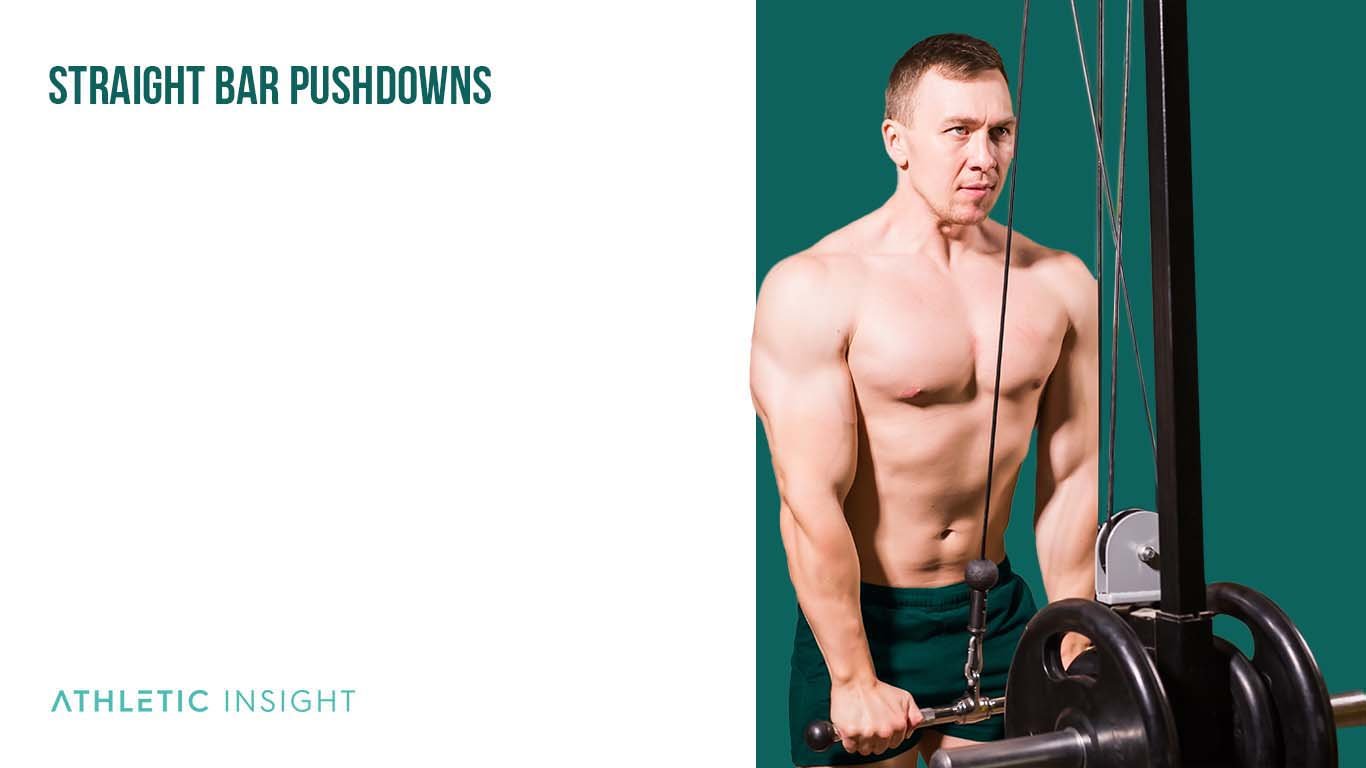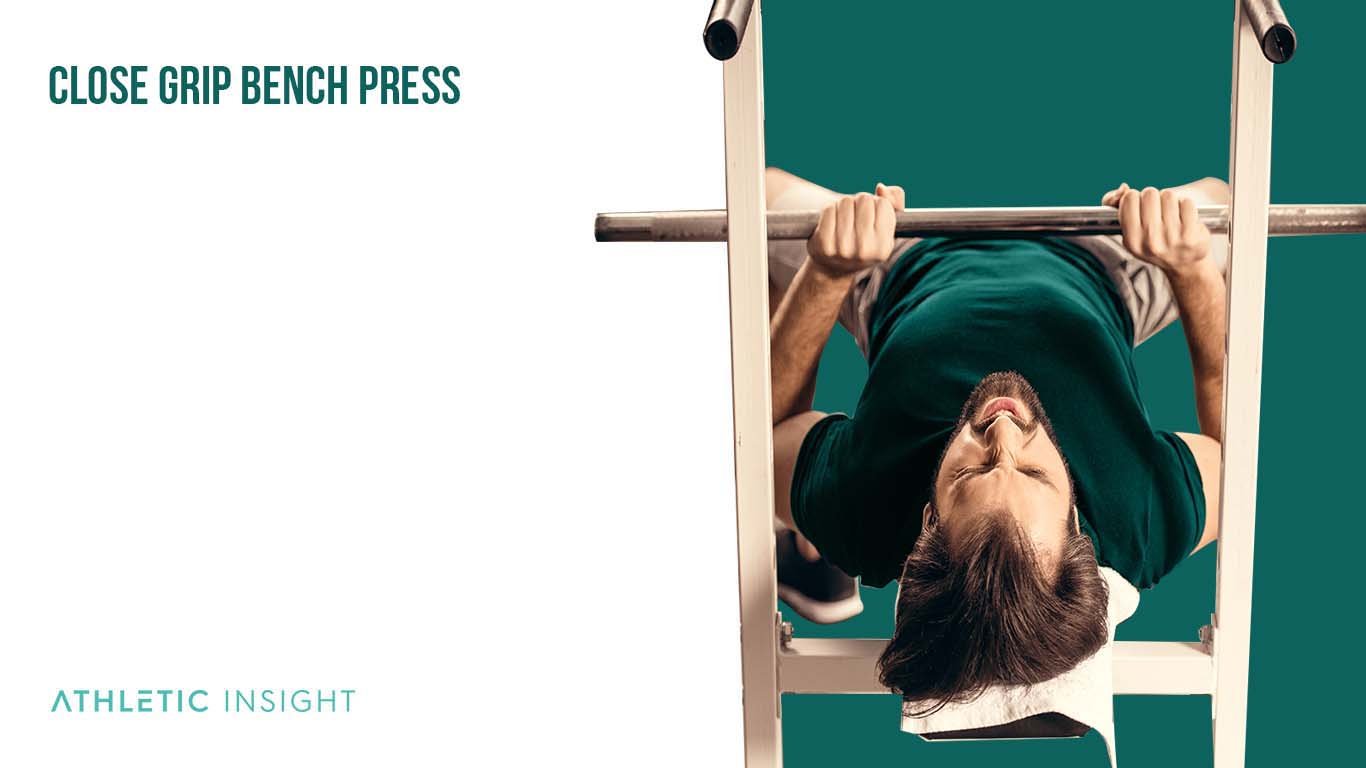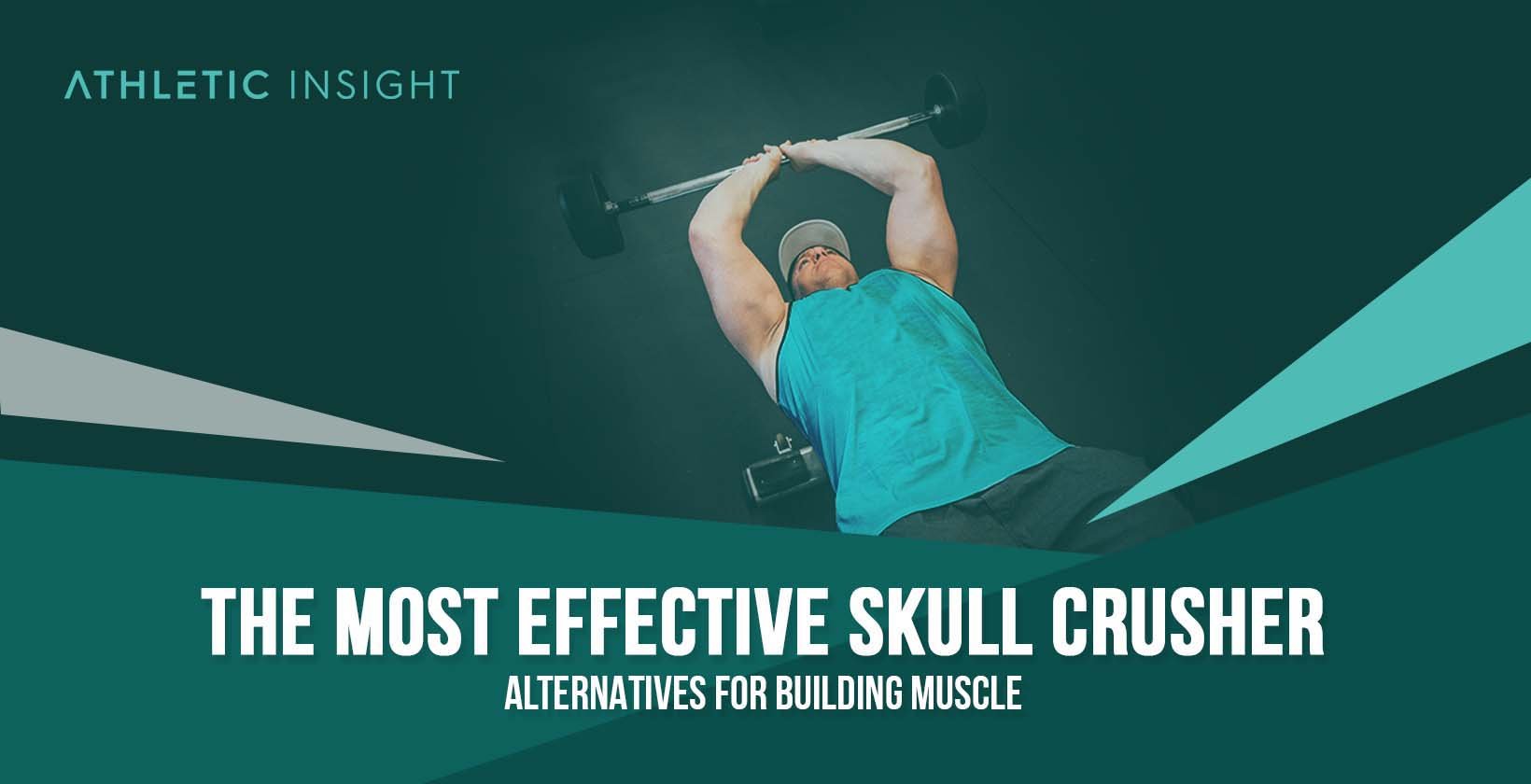The skull crusher is an upper-body strengthening and toning exercise that focuses primarily on the posterior side of your arms and upper body. The skull crusher isolates the triceps brachii since many people will only be hinging at their elbows and avoid extraneous paper body motions.
The skull crusher is suitable for both beginner and advanced gym-goers who want to build their triceps with a low impact and easy exercise. Bodybuilders and weightlifters will use this exercise to build their upper body and triceps for shows and for other upper-body lifts, such as the bench press, overhead press, and pull-ups.
Athletes may find this exercise helpful if they have upper-body muscular imbalances or if they are upper-body athletes, such as baseball or football player.
Beginners can use the skull crusher to build their triceps or an alternative to the skull crusher. Skull crusher alternatives are helpful for beginners who can’t get the form or do not want to use heavyweights. Beginners can try bodyweight skull crusher alternatives, skull crusher alternatives at home, a seated triceps extension, lying chest pullover, or a incline bench skull crusher.
Advanced weightlifters can try more difficult skull crusher variations that work to put more strain on the triceps during the movement, such as the EZ bar skull crusher alternative, sitting EZ bar skull crusher, incline skull crusher alternative, seated barbell skull crusher, single-arm pushdown, cable pushdown, and two-arm pushdown.
1. Rope Pushdowns
Rope pushdowns are a skull crusher alternative that works the triceps, deltoids, rhomboids, and levator scapula. The core muscles and the obliques are worked during the exercise to keep your body stable, avoiding any swaying motion. Bodybuilders, athletes, and weightlifters can use this exercise to build full upper-body posterior strength.

Alternatives to this exercise include the single-arm pulldown, rope cable pulldown, lat pulldown machine, close grip bench press, and straight bar pushdowns. One mistake to avoid during this exercise is to bend your arms. Many people can prevent this mistake by keeping their arms straight and keeping their chests upright.
The toughness level of this exercise is a 4 out of 10 since many people will have to use their core strength, keep proper form, and maintain good posture during the entire motion.
2. Bench Rolling Triceps Extension
The bench rolling triceps extension is an alternative to the skull crusher exercise that works the triceps primarily. Although the forearm flexors and wrist are used to stabilize the weight in this motion, the primary movers in the focus of the exercise are the triceps on both arms. This exercise is suitable for bodybuilders and weightlifters who want to isolate their triceps to build bigger arms.
Alternatives to this exercise include the seated triceps extension, standing triceps extension, single-bar triceps extension, barbell triceps extension, EZ bar triceps extension, and lying skull crushers. One mistake to avoid during this exercise is to bring your head off the bench. Weightlifters can prevent this mistake by keeping their head and back on the bench and only moving at their elbows.
The toughness level of this exercise is a 4 out of 10 since those performing the exercise will be supported the entire time and not have to use their core to balance their body weight.
3. Straight Bar Pushdowns
The straight bar pushdowns is a barbell skull crusher alternative that taxes the pectoralis major, pectoralis minor, triceps brachii, and anterior deltoids. This exercise is good for upper-body athletes who want to build core and upper-body strength simultaneously and for bodybuilders who wish to target the front of their body.

Alternatives to this exercise include rope pushdowns, cable pushdown,single-arm cable pushdown,s single-arm rope pulldowns, and lat pulldown machine. One mistake to avoid during this exercise is to bend your elbows. Individuals can prevent this mistake by focusing on locking out their elbows and keeping their chest upright.
The toughness level of this exercise is a 4 out of 10 since it requires more core strength and stabilization than other exercises.
4. Reverse Dip
The reverse dip is an alternative to skull crusher exercise that focuses on the triceps, core, hips, anterior deltoids, posterior deltoids, pectoralis major, and upper rhomboids. Since the person performing the exercise will have to brace their core and stabilize themselves on a bench to hold their own body weight, this can sometimes be considered harder than other weight-related skull crusher movements that focus primarily on the triceps.
Alternatives to this exercise include the bodyweight dip machine, overhead triceps extension, single-arm pushdown, two-arm pulldown, close grip bench press, and diamond push-ups. One mistake to avoid during this exercise is to arch your upper back. Users can prevent this mistake by only moving at their elbows and keeping their chest facing forward.
The toughness level of his exercise is a 4 out of 10 but can increase to an 8 out of 10 if you straighten your legs and do multiple reps.
5. Single-Arm Pushdown
The single-arm pushdown is a skull crusher alternative that works the triceps, anterior deltoid, rhomboid, and pectoralis major. This exercise is good for athletes who are trying to fix muscular imbalance or for bodybuilders or weightlifters who want to focus on their triceps to build a bigger upper-body size.
Alternatives to this exercise include the two-arm pushdown, lat pulldown machine, pull-up, chin-up, close grip bench press, triceps kickbacks, weighted dips, and elevated dips. One mistake during this exercise is leaning one way with your body. Many people can avoid this mistake by bringing their core and only moving their arms at the tricep hinge.
The toughness level of this exercise is a 4 out of 10 since it isolates one muscle and does not require a complicated form.
6. Close Grip Bench Press
The close grip bench press is a skull crusher alternative that focuses on the pectoralis major, anterior deltoids, triceps brachii, and core. This exercise is suitable for both athletes and weightlifters who want to build their paper-body strength and power for use on the bench press, chin-ups, pull-ups, and plank.

Alternatives to Thai exercise include the wide-grip bench press, normal-grip bench press, push-up, chin-up, pull-up, overhead press, and chest fly. One mistake to avoid during this exercise is letting your elbows flare out. Most people can prevent this mistake by squeezing their pectoral muscles and keeping their elbows touching their sides.
The toughness level of the close-grip bench press is a 5 out of 10 since it requires more triceps activation than the regular bench press.
7. Diamond Push-Ups
Diamond push-ups are a decline skull crusher alternative that works the upper body and lower body, taxing the pectoralis major, triceps brachii, anterior deltoid, core, and quadriceps. This exercise is good for full-body those who work their upper and lower body, such as baseball players, football players, and wrestlers.
Alternatives to the diamond push-ups include regular push-ups, wide grip push-ups, close-grip push-ups, pull-ups, chin-ups, bench press, close grip bench press, and dumbbell bench press. One mistake to avoid during this exercise is to move your hands away from one another. Any individuals can prevent this mistake by keeping their hands touching during the entire range of motion and to keep their core tight.
The toughness level of the diamond push-up exercise is a 7 out of 10 since users will have to balance their pectoral strength, triceps strength, and core strength at once. Although push-ups are a hard bodyweight exercise, diamond push-ups place more emphasis on the triceps brachii, making this a more taxing exercise.
8. Triceps Kickbacks
Triceps kickbacks is a dumbbell skull crusher alternative that works the triceps and posterior deltoids. This exercise is good for bodybuilders and weightlifters who want to focus on the posterior side of their shoulder and arms to isolate the muscles and build size.
Alternatives to this exercise include diamond push-ups, overhead triceps extension, seated triceps overhead extensions, single-arm triceps overhead extensions, and cable pulldowns. One mistake to avoid during this exercise includes not keeping your elbow tight to your body. Most people can prevent this mistake by keeping a flat back and only moving the weight at the elbow hinge.
The toughness level of his exercise is a 4 out of 10 since it requires only one motion and has a simple form. Triceps kickbacks are useful for beginners who want to just focus on their triceps and cannot focus on core activation, shoulder stabilization, or rear deltoid movement.
What to know about Skull Crusher alternatives?
Skull crusher alternatives are an excellent way for beginners and athletes alike to find a suitable exercise that works for their needs. Bodybuilders and weightlifters will want to target their triceps primarily to build upper-body mass and size, whereas athletes may want a more functional movement. Beginners may look for bodyweight skull crusher alternatives and at-home alternatives that are easy to learn.
Which Skull Crusher alternative is beginner friendly?
The best skull crusher alternatives that are beginner-friendly for new gym-goers include the rope pushdowns, bench rolling triceps extension, straight bar pushdowns, and triceps kickback.
Which Skull Crusher alternative is better for triceps?
The best skull crusher alternative for triceps activation is the revs dip, single-arm pushdown, diamond push-ups, and triceps kickbacks.
Which Skull Crusher substitute is better for strength?
The best skull crusher substitute for strength includes more muscle groups and functionality, such as the revs dip, close grip bench press, and diamond push-ups.
When should an athlete use the SkullCrusher alternative for exercise?
Athletes should concise using a skull crusher alternative if they want to tax their chest and shoulders along with their triceps, such as the diamond push-ups and close grip bench press for extra upper-body power.
What are the advantages of modifying Skull Crusher?
People can modify the skull crusher so they can work with existing injuries, tax muscles to a higher degree, change the degree of difficulty, and meet their specific goals. Users who have skull crusher alternative elbow pain can modify the exercise to find a tricep skull crusher alternative that is joint-friendly.
Can Skull Crusher alternatives replace the Skull Crusher?
No, some skull crusher alternatives can work the same muscles and provide similar benefits and movement patterns, although no one exercise can fully replace the skull crusher exercise.
Are Skullcrusher Alternatives Good for Elbow Health?
Yes, skull crusher alternatives can place less strain on the elbow and wrists, helping avoid any excess strain and overuse injuries that can occur from repetitive motions.
What are the SkullCrusher Variations?
While there are many skull crusher variations, there are 8 primary options to choose from which are listed below. For a beginner friendly option, try the rope pushdowns. For an intermediate option, the close grip bench press is an effective option. For an advanced variation, try the diamond push-up.
- Rope Pushdowns
- Bench Rolling Triceps Extension
- Straight Bar Pushdowns
- Reverse Dip
- Single-Arm Pushdown
- Close Grip Bench Press
- Diamond Push-Ups
- Triceps Kickbacks



